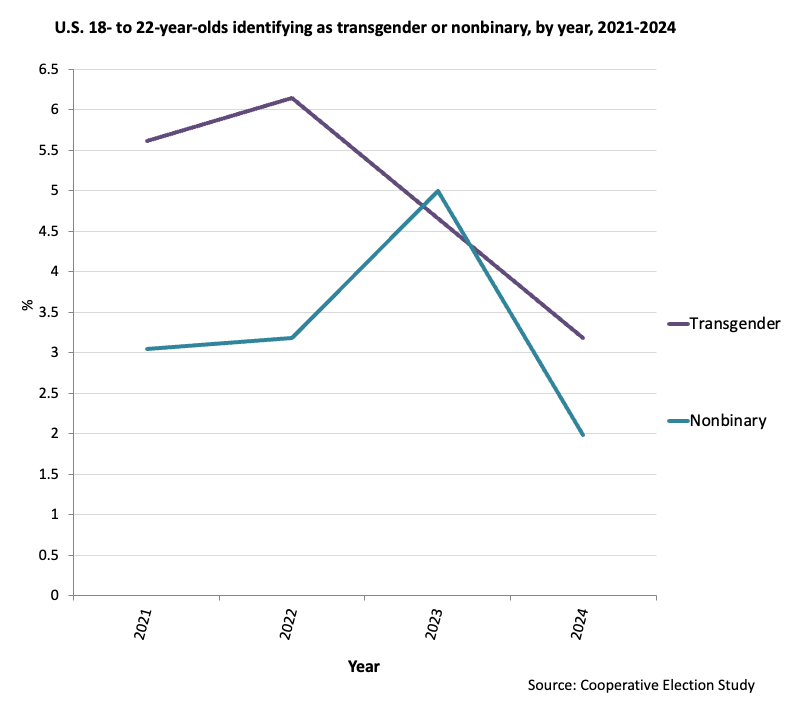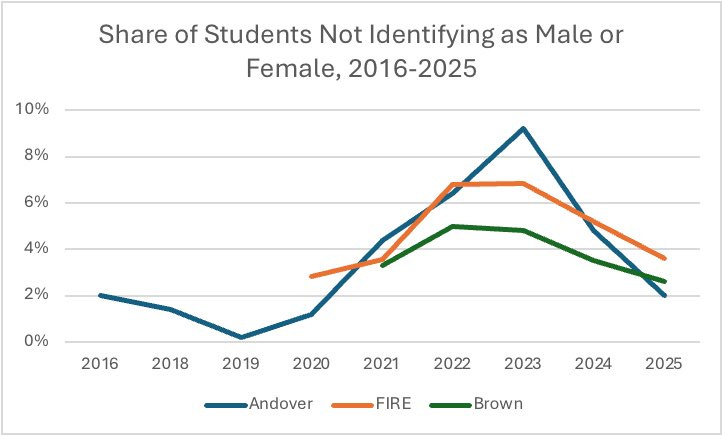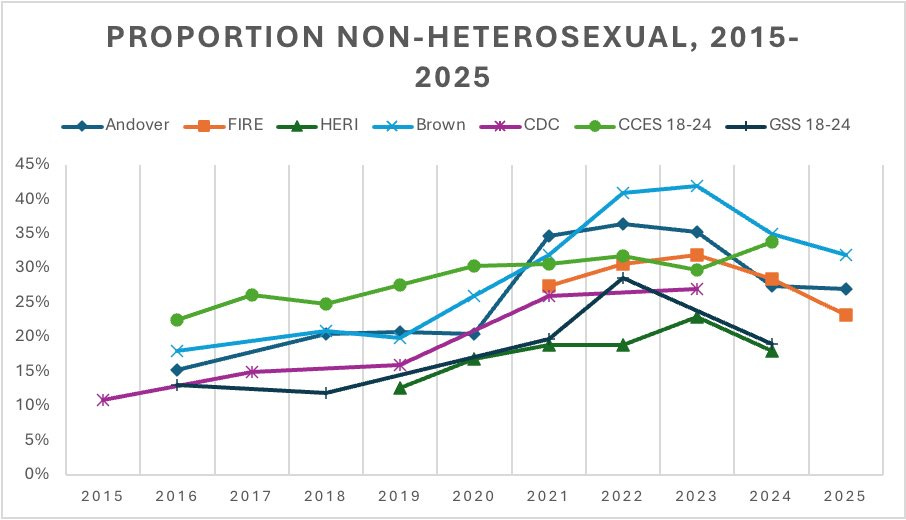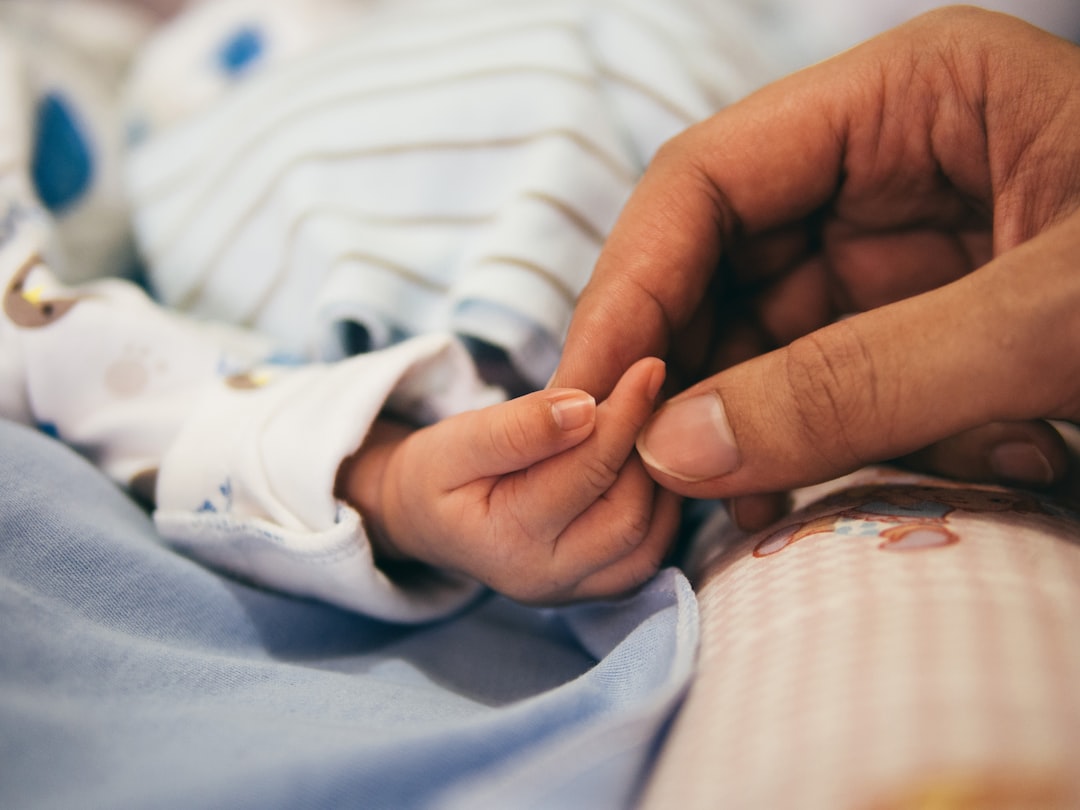Fewer Young People Are Identifying as Trans, Non-Binary, or Non-Heterosexual
A new report suggests the recent surge in non-traditional identities may have peaked

In Case You Missed It…
Sex Differences in Work Preferences, Life Values, and Personal Views [No paywall]
Beyond General Intelligence: The Genetics of Specific Cognitive Abilities
[Updated on October 22, 2025.]
This is interesting: Fewer young people are identifying as trans, non-binary, or non-heterosexual. After rising through the 2010s and peaking in the early 2020s, the numbers now seem to be falling.
That’s the verdict of a new report from Eric Kaufmann of the Centre for Heterodox Social Science. Here are two graphs from the report.
The first shows the percentage of students not identifying as male or female between 2016 and 2025. Note that Kaufmann treats this as synonymous with identifying as trans, but that’s a mistake - many trans people identify as male or female. Other data suggest, however, that trans identity is following the same trend. (See update below.)
The second graph shows the percentage of students identifying as non-heterosexual between 2015 and 2025. Gay and lesbian numbers are stable, but fewer people are now identifying as queer or bisexual.
What might explain this trend? First things first, it’s not that young people have become less woke, more religious, or more conservative. It’s also not that they’re spending less time on social media. Kaufmann tested all those hypotheses, and found no support for any of them.
One hypothesis he did find some support for, though, is that the trend is partly due to changes in mental health. Youth mental health hit a low point during the pandemic, and has since bounced back to some degree. Consistent with the idea that this shift drove changes in identification, statistically controlling for mental health weakens the time trend considerably. It doesn’t eliminate it entirely, however, so it can’t just be down to changes in mental health.
Another possibility is that identifying as non-binary or non-heterosexual was, to some extent, a youth fashion that’s now going out of fashion. As Kaufmann put it, the decline “seems most similar to the fading of a fashion or trend. It happened largely independently of shifts in political beliefs and social media use, though improved mental health played a role.”
This isn’t to deny, of course, that some people are non-heterosexual. The suggestion is simply that identifying that way became fashionable for a time in certain circles, and thus that the numbers were somewhat inflated.
You can read Kaufmann’s viral thread about the research here.
You can read his summary of the research here.
You can read the full report here.
Update #1
Kaufmann’s report created a huge stir online. Much of this centered on the issue I mentioned above, that while Kaufmann claimed that trans identity was in free fall, he only had data on nonbinary and non-heterosexual identities.
But psychologist and Substacker Jean Twenge has since uncovered other data suggesting trans identification is indeed declining as well. Check out her Substack post on the subject here.

Update #2
Kaufmann has published a lengthy response to criticisms of his work in the latest issue of Skeptic. You can find that here.
Follow me on Twitter/X for more psychology, evolution, and science.
How You Can Support the Newsletter
If you want to support my efforts to bring you non-politicized psychology, there are several ways you can do it.
Like and Restack - Click the buttons at the top or bottom of the page to boost the post’s visibility on Substack.
Share - Send the post to friends or share it on social media.
Upgrade to a Paid Subscription - A paid subscription will get you:
If you could do any of the above, I’d be hugely grateful. It’s the support of readers like you that makes this newsletter possible.
Thanks!
Steve
Coming Soon to The Nature-Nurture-Nietzsche Newsletter…
12 Things Everyone Should Know About the Dark Triad
The Nature-Nurture-Nietzsche Linkfest for October 2025
The Problem of Free Will, Part 3: Does Free-Will Denial Make Us Bad?
Related Reading
From the Archive
Birth Order and Same-Sex Sexual Orientation
The fraternal birth order effect refers to the observation that the more older brothers a man has, the more likely he is to be gay. The original claim was that the effect is found only in men, and that older sisters have no impact on sexual orientation. The leading explanation for the phenomenon is the
The Trouble with "Sex Assigned at Birth"
Should the concept of biological sex be replaced with the notion of “sex assigned at birth”? Although this question has sparked contentious debate in some quarters, many progressives and mainstream institutions have quietly gone along with the shift to the latter option.








I don't get why the report - “The Decline of Trans and Queer Identity among Young Americans”- wasn’t titled “The Increase of Heterosexual Identity among Young Americans” instead.
The researchers chose to operate on an inverted Pareto principle, giving disproportionate attention to trends within the 10–20% that deviate from the norm while overlooking the 80% - 90% that conform to the norm.
The CCES and GSS (broader data) - as cited by the authors - show that, although numbers have risen slightly, fewer than 20% of 18- to 24-year-olds identify as non-heterosexual. The same data can just as accurately be described as showing that more than 80% identify as heterosexual and have done so over the past decade. Not too controversial.
Similarly, fewer than 10% of respondents consistently identify as neither male nor female, meaning over 90% still do and have over the last decade. Again, not too controversial.
When you look at the data in its entirety, the only thing this report shows is that when it comes to sexuality, a small percentage of the population deviates from the norm. And things haven't changed much over the past decade.
That's not very interesting or controversial.
Oh, now I get it.
Good stuff as always. I’ve read research on two points that relate here. One is the literature out there on social contagion. It’s more real than some want to admit.
The other is a study that showed that a large number of lesbians turned out to be homosensual rather than homosexual. What they found was that of those who were found to be homosensual, they were abused by men as a child or late adolescence. Thus they were more male-averse than genuinely homosexual.
Once trauma was sorted out, their sexual inclinations redirected.